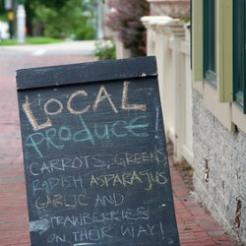There is something new and wonderful happening in the world of giving – finally, the internet is delivering on the promises and potential of the past few years, says Marcelle Speller.
It seems as if, for a decade or more we’ve been told that internet giving and online donations are the way forward. But until recently, both donors and charities (at least the smaller local variety) have been reluctant, or perhaps just uncomfortable embracing this new technology.
In 2009, online giving fell into the “other” category in a Charities Aid Foundation survey on UK Giving. Only 2 per cent of donating fell into this category. Cash was, and still is, the favourite method for donating with nearly half of people opting for hard currency as their favourite means to give.
There are many reasons why, in the past, online may have been unpopular as a giving tool. First of all it was new, untried and the methodology involved with many websites was questionable and even flaky.
Secondly, the very people who traditionally make the most donations to charities and community groups are older, those 65+. It has taken this demographic a little longer to get to grips with the internet, laptops, wi-fi, mobile apps, e-commerce and new technology in general. Those under 25, who have been born into the computer age are significantly less likely to be regular donors. However, those of the younger generation who do give, are far more likely to do so online. The same UK Giving 2011 report showed that the demographic most likely to use the internet to donate is the 25 to 44-year-old bracket.
A cultural shift?
But recently, giving online appears to have exploded. Perhaps it is as a result of social media where the likes of Stephen Fry regularly urge their followers on Twitter to check out specific causes. Or perhaps it’s down to a proliferation in the number of sites offering the internet as a safe, easy and convenient means to give. Or perhaps it’s because donors are becoming more comfortable using the internet to move their money around. After all, online shopping and e-commerce has grown exponentially in recent years – how different is it to donate money to your favourite charity online than to do your shopping via eBay?
The latest general figures available from the UK Giving 2011 report showed that 7 per cent of donors had made donations online in 2010/11. This figure is static compared to 2009/2010, which in turn was up four percentage points on 2008/09. And although the latest figures (to end 2011) indicate giving online has plateaued, at Localgiving.com our evidence suggests something else is going on. It’s just a sense of movement, a frisson of change, a slight shift in perception.
Traditionally, awareness of local charities has been low. While many people do give to causes at least once a year, the majority of donations are to the big, national charities. It may be that a Catch 22 was in operation with people being unaware of what was happening in their own patch because charities and groups weren’t using the internet efficiently enough to tell them.
But it seems there is a very real step change towards using online tools to find and explore charities and community groups in our own backyard.
This was evidenced very recently when, at the beginning of March Localgiving.com launched a match fund worth £375,000 in England.
In the two weeks prior to the launch, Localgiving.com worked with Community Foundations and charities to build awareness of the coming match fund among donors. A little bit of local press, a touch of social media, some word of mouth, a few emails, and the entire £375,000 was gone in just 30 hours! To put this in greater perspective, in the three years since we launched, we have distributed just over £1m of donations.
Today there are many ways to learn more about the causes that are important to individuals. Localgiving.com can point donors towards small, local charities and groups, while sites like Justgiving and Virgin Money Giving can help with sponsorships etc. It seems as if people have been waiting for all the pieces to fall into place and now they can take advantage of the tools and products available online to help them to donate.
Using the internet, social media and mobile apps is becoming a much more comfortable experience for both charities and donors. I believe that’s because companies like mine and our colleagues have worked hard to get the experience right for all concerned.
As an industry, we need to build on the growing confidence and commitment to online giving from both donors and charities. Innovation in systems and technologies, great marketing and PR and good on-the-ground connections will help us to make donating online the norm rather than the exception.
Marcelle Spencer is founder and chief executive of localgiving.com








